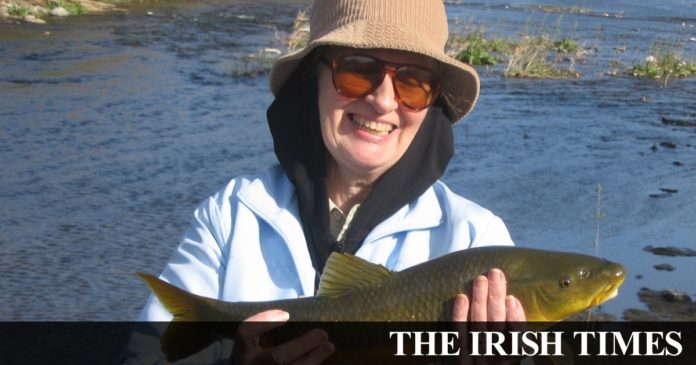I lived in London many years ago, and still have pleasant memories coarse fishing on the River Thames. Setting up camp on the riverbank at Hampton Court became a weekend summer pastime fishing for bream, dace and roach by day and the shy, sporty barbel by night.
Of course, the elusive barbel was the main attraction. Ledgering with worms in the fast-running water, the magical sound of the bite alarm in darkness signalled a run to last several minutes before banking the whiskered fish of perhaps 4.5kg (10lb). To catch three in one session was considered an exception.
These memories were rekindled in 2010 while on holiday in Spain, where I linked up with renowned fly tyer Michael Hayes. Now living in Elviria near Marbella with his wife, Betty, he discovered a plethora of rivers suitable for fly fishing for barbel.
Michael was keen to point out that since joining ACPES, an association dedicated to fish conservation or pesca sin muerte, it had directed him to locations deep in the mountain range of southern Spain.
While most rivers had dried up due to lack of rain, there were still some deep pools to be found. One such pool was on the River Rio in the town of Casasola, near Campanillas, 12km northwest of Málaga city.
We took time to allow a herd of wild goats and their shepherd pass by before descending down a deep, dried-up gorge. “In the raining season this is inaccessible, with a torrent of water from the mountains,” Michael said.
We soon found the pool at the bend of the otherwise dry river. And surprise, surprise, plenty of barbel cruising below the surface. In preparation for my visit Michael had assembled some barbless Klinkhammer flies, a dry fly that previously worked well.
Cautiously manoeuvring the cast and taking care not to spook the fish, I soon connected with my first Iberian barbel. After an exciting struggle the fish of about 0.6kg (1.3lb) was landed, photographed and quickly returned to the water.
In complete contrast, our afternoon session entailed a short drive to the Casasola embalse, a 9km reservoir that supplements the water supply to Málaga. Here, our quarry was black bass or large-mouth bass.
“Try a tinsel-tailed yellow popper and create a splash on retrieval,” Michael advised. Within minutes, these sturdy, tough-skinned bass were attacking the poppers from all directions. I accounted for at least 15. Great sport!
Later in the week we travelled 10km west of Marbella, passing the beautiful pueblo blanco or white village of Ojén, en route to Aroyo and the River Grande. This river was also in severe drought, with just the deepest sections retaining water. The barbel were showing in good numbers, some to 1kg (2.2lb).
I first tried the Klinkhammer, then a beaded nymph, and finally got an “interest” in a tiny black midge. However, I missed the fish and instead spooked the residents which brought an abrupt end to our fishing.
I was grateful to Michael, though, for allowing me share his fishing hideaways. “I like to go fishing at least once a week – it gets better from late October with the onset of rain,” he told me.
Waiting for the first wild salmon
One month into the new season for a limited number of fisheries and still we await the first wild salmon of 2021.
On the Drowes, with just a few anglers out on the river,there’s little to report besides the odd sea trout and a few salmon lost, according to proprietor Shane Gallagher.
“Those with permits purchased prior to lockdown and living within 5km of the fishery are only permitted to fish,” he said.
It’s a similar story on Lough Currane in Waterville, Co Kerry. “A few boats ventured out on opening day with no success. Since then the weather has deteriorated with heavy rain and the lough has risen dramatically,” gillie Neil O’Shea said.
angling@irishtimes.com
Credit: Source link































